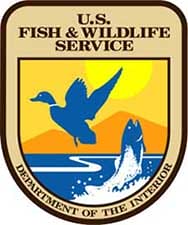
USA – -(Ammoland.com)- Amidst catastrophic population declines leaving fewer than 200 known pairs in existence in the early 1970s, the Kirtland’s warbler seemed to be rapidly heading towards extinction. But after decades of partnership efforts among federal and state agencies, industry and conservation groups, this songbird has rebounded, and the U.S. Fish and Wildlife Service is now proposing to remove the Kirtland’s warbler from the list of endangered and threatened species. The proposal opens a 90-day public comment period that will help inform a final decision.
“Kirtland’s warblers were once on the brink of extinction and one of America’s rarest birds, but today they represent the power of partnership to recover imperiled wildlife,” said Tom Melius, Midwest Regional Director for the U.S. Fish and Wildlife Service. “Without a doubt, this bird’s recovery is the result of cooperation among states, local residents, federal agencies and conservation groups. This dedicated conservation community is committed to addressing the needs of the Kirtland’s warbler into the future.”
“The recovery of Kirtland’s warbler is a great Michigan success story,” said Keith Creagh, director of the Michigan Department of Natural Resources. “Today’s announcement by the Fish and Wildlife Service is the culmination of years of hard and thoughtful work by the DNR and partners. Together, we’ve been able to support sustainable harvest of jack pine, creating the large areas of forest habitat where this song bird thrives while at the same time providing local economic prosperity.”
Kirtland’s warblers, which nest only in young jack pine stands in Michigan, Wisconsin and Ontario, and winter in The Bahamas, were among the first wildlife in the United States identified as being at risk of extinction. Populations of the small songbird dipped to a low of 167 pairs in 1974 and again in 1987 before starting a steady climb toward recovery.
The upturn in the species’ fate began only after partners launched long-term efforts to conserve young jack pine habitat and control brown-headed cowbirds, a primary threat to Kirtland’s warblers. Cowbirds lay their eggs in warbler nests; larger cowbird chicks outcompete their warbler nest mates, causing the warbler chicks to die while the unwitting warbler parents raise the cowbird imposters.
In response to consistent implementation of conservation measures year after year, the Kirtland’s warbler population began to increase dramatically. Numbers reached more than 1,000 pairs by 2001, expanding beyond the northern Lower Peninsula to areas in Michigan’s Upper Peninsula, Wisconsin and Ontario. Currently, the Kirtland’s warbler population is estimated to be over 2,000 pairs, more than double the recovery goal identified in the Kirtland’s warbler recovery plan. The population has exceeded recovery goals for the past 16 years and continues to increase and expand its range.
The Kirtland’s Warbler Breeding Range Conservation Plan was developed in 2015 and is now the guiding management strategy for the species. Additionally, funding and other commitments to habitat management and cowbird control are in place to ensure continuation of conservation actions in the absence of Endangered Species Act protections.
The Service’s proposal to remove the Kirtland’s warbler from the list of endangered and threatened species begins a process during which the agency invites public comment regarding the status of the species. Comments are accepted through July 11, 2018.
To submit comments electronically visit http://www.regulations.gov and enter FWS–R3–ES–2018–0005 in the search box. To submit a hard copy, submit by U.S. mail or hand-delivery to: Public Comments Processing, Attn: FWS–R3–ES–2018–0005, U.S. Fish and Wildlife Service, MS: BPHC; 5275 Leesburg Pike, Falls Church, VA 22041–3803.

We request that you send comments only by the methods described above. We will post all comments on http://www.regulations.gov. This generally means that we will post any personal information you provide us.
More information about the Kirtland’s warbler and the proposal to remove Endangered Species Act protections is available at: www.fws.gov/midwest/endangered/birds/Kirtland/index.html.
